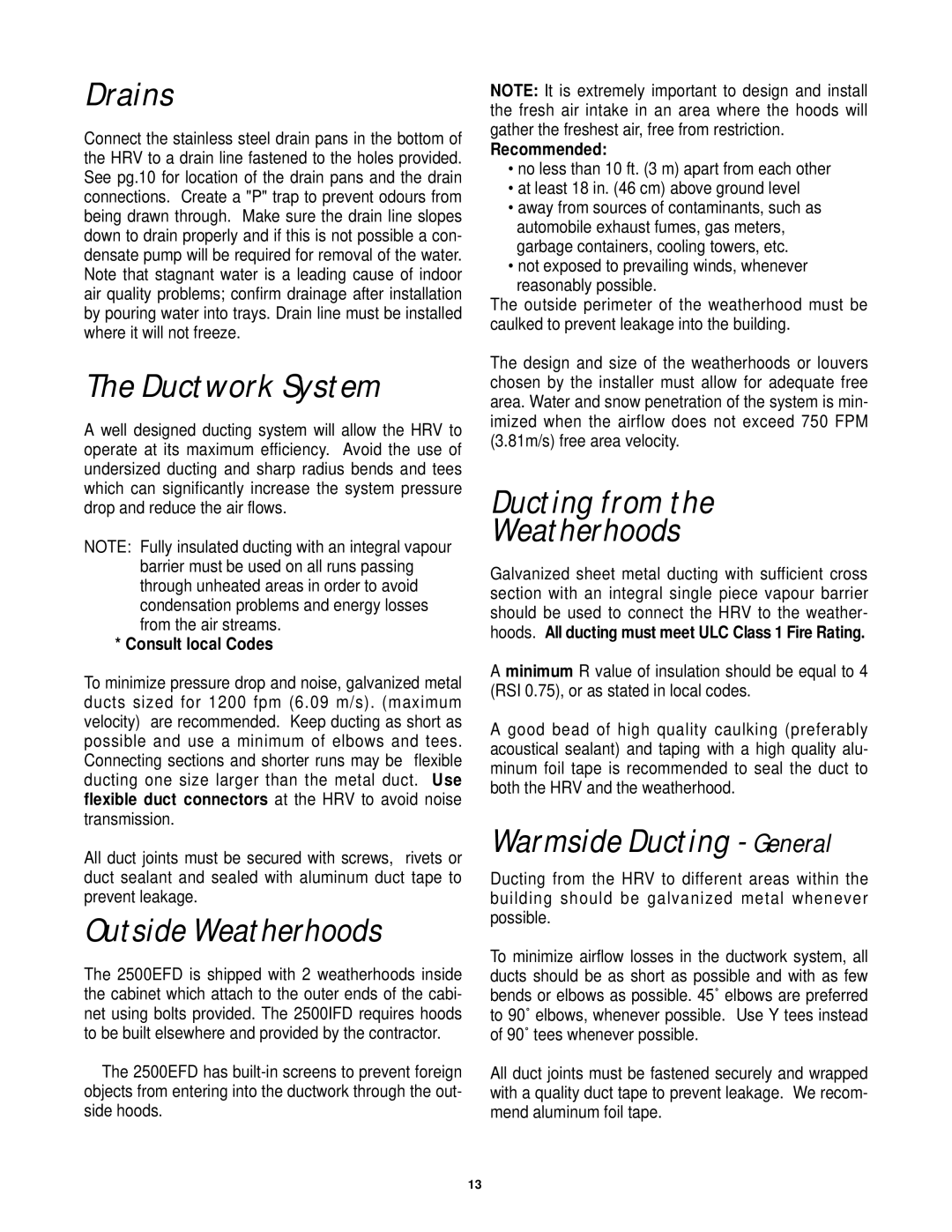2500IFD specifications
The Lifebreath 2500EFD and 2500IFD are advanced energy recovery ventilation units designed to enhance indoor air quality while maximizing energy efficiency. These systems are particularly beneficial for residential and commercial structures, offering a sustainable solution to manage indoor environments.One of the standout features of the Lifebreath 2500 series is its Energy Recovery Ventilator (ERV) technology. This innovative system allows for the transfer of heat and moisture between the incoming and outgoing air streams. As a result, during winter months, the ERV preconditions the incoming cold air with the warmth of the outgoing air, helping to maintain a comfortable indoor temperature without excessive energy expenditure. Conversely, during summer, it helps to draw the humidity out of the incoming air, leading to a more comfortable living space.
The Lifebreath 2500EFD model is designed with a direct drive motor that operates quietly and efficiently, providing superior performance with minimal maintenance. The high-efficiency filter systems ensure that the air circulated indoors is free of dust, pollen, and other airborne contaminants, significantly improving the overall air quality. Both models also incorporate a digital control system, allowing for precise adjustments and easy monitoring of indoor air parameters.
Another significant characteristic of the Lifebreath 2500IFD is its integrated filtration technology. It features MERV 8 filters that capture fine particles, effectively reducing allergens and improving health for occupants. The unit runs quietly, ensuring that it does not disrupt daily activities while providing constant ventilation.
The Lifebreath units are also built with durability in mind. Constructed from robust materials, they are designed to withstand various environmental conditions while ensuring longevity. The compact design makes them suitable for both new constructions and retrofitting existing spaces, making them versatile solutions for improving ventilation in diverse building types.
In summary, the Lifebreath 2500EFD and 2500IFD systems combine advanced energy recovery technology with efficient air filtration, quiet operation, and a user-friendly control system. By prioritizing indoor air quality and energy efficiency, these ventilation units are essential tools for creating healthier, more comfortable living and working environments.
